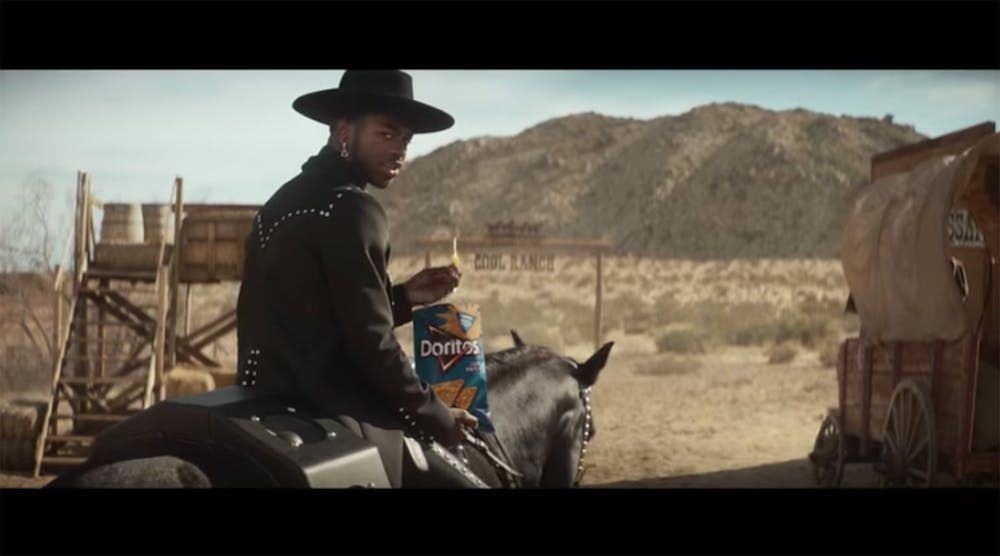While the purpose of the Super Bowl is for the best two teams in the NFL to compete for the conference title, the advertisements are just as important as the game itself and prove to be lucrative in the realms of business and entertainment. They are vital to the game, as they bring people together through means of pop culture references, catchy and humorous content and heart-warming messages.
In any other case, people might find themselves changing the channel on the television when commercials start to play. However, the Super Bowl offers a unique opportunity for advertisers to draw viewers’ attention to the content and delivery of their commercials, as many viewers pay attention to all aspects of the Super Bowl, including the ads.
Commercials have always been large part of the Super Bowl and, to some people, are even more important than the game. According to a recent survey, 20% of respondents said they only watch the game for the commercials, while another survey in 2020 found that 38% of people would share that year's ads across social media.
Throughout the past few decades, many companies have seized this opportunity and have heavily benefited from doing so.
Many consider Apple’s 1984 commercial promoting its new computer system Macintosh to be the starting point that launched the popularity of Super Bowl advertisements and viewership. Depicting a setting reminiscent of George Orwell’s "1984," the commercial featured a woman breaking through a brainwashed crowd with a sledgehammer to shatter a screen representing “Big Brother.” While Apple’s board initially disliked the commercial, its running during the Super Bowl generated millions of viewers, a slew of awards and sold 72,000 computers in the 100 days after the ad aired.
Many iconic and recognizable commercials would follow Apple's example. Coca Cola’s “Hey Kid, Catch!” advertisement featuring “Mean” Joe Greene and McDonald’s “The Showdown” featuring Larry Byrd and Michael Jordan are frequently cited as some of the most popular commercials to ever debut during the Super Bowl due to their featured pop culture icons and witty humor. Just last year for the 2020 game, some of the more popular ads consisted of the NFL's “Next 100,” and Doritos’ ad with Lil Nas X and Sam Elliott. These ads also featured NFL legends and catchy, familiar songs.
Ads such as these reign supreme in pop culture and throughout social media, as seen through Twitter's "Brand Bowl," which ranks certain ads based on the largest overall conversation share, the most retweets and the most positive reception.
As of 2019, purchasing a 30-second advertisement slot cost $5.25 million. While the expense is great, the payoff has proved to be much larger. That year, many Super Bowl commercials released before Super Bowl Sunday were watched over 100 million times by the Friday before the game. Movie trailers aired during the game had opening weekend revenues that were twice that of the cost of the advertisements themselves. While viewership of the Super Bowl has gone down in the last few years, the increase in profit for the companies that typically air advertisements during the game is significant.
The impacts that such advertisements have within the domain of entertainment are substantial. The creative marketing decisions that go into these commercials are vital to that company's success. For example, last year's commercial featuring the death of Planters' "Mr. Peanut" leading up to his funeral-themed ad for the Super Bowl generated more than 25,000 retweets and 100,000 likes in less than a day. This resulted in comedian Patrick Monahan tweeting: "Mr. Peanut is in Hell. He spent decades as the smiling face of a company that sold the boiled and roasted corpses of his people as a snack."
Using sites such as YouTube or Twitter, Planters and other companies effectively build their advertisements up before the game and generate long-lasting reactions in return, whether it be memes or jokes. This Planters' commercial in particular had 11 billion earned impressions in 2020 alone.
The football game itself is obviously important to the hype that surrounds the Super Bowl. However, the greater impacts of the Super Bowl last more within the business and entertainment world; profits and recognition seem to last longer than the game itself.

